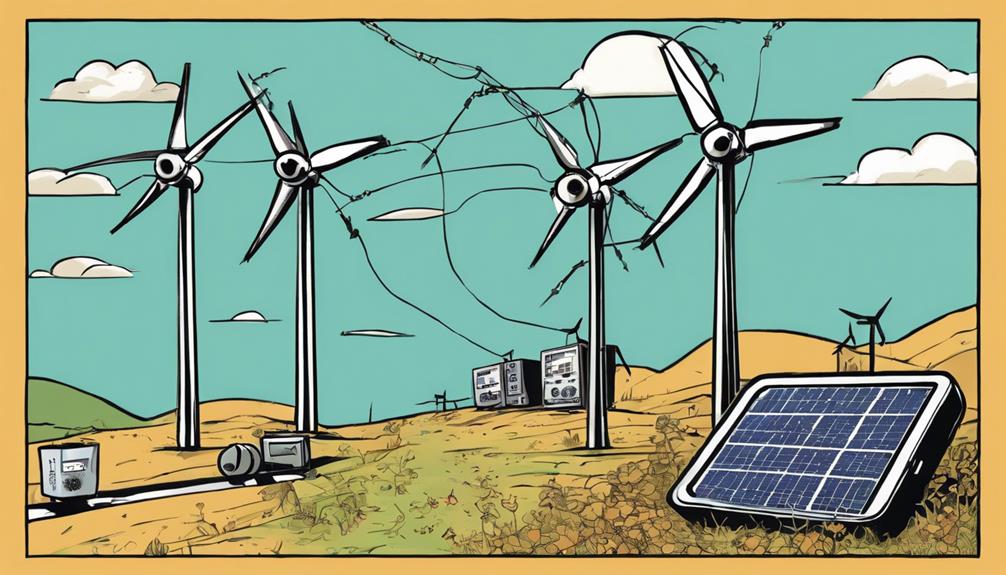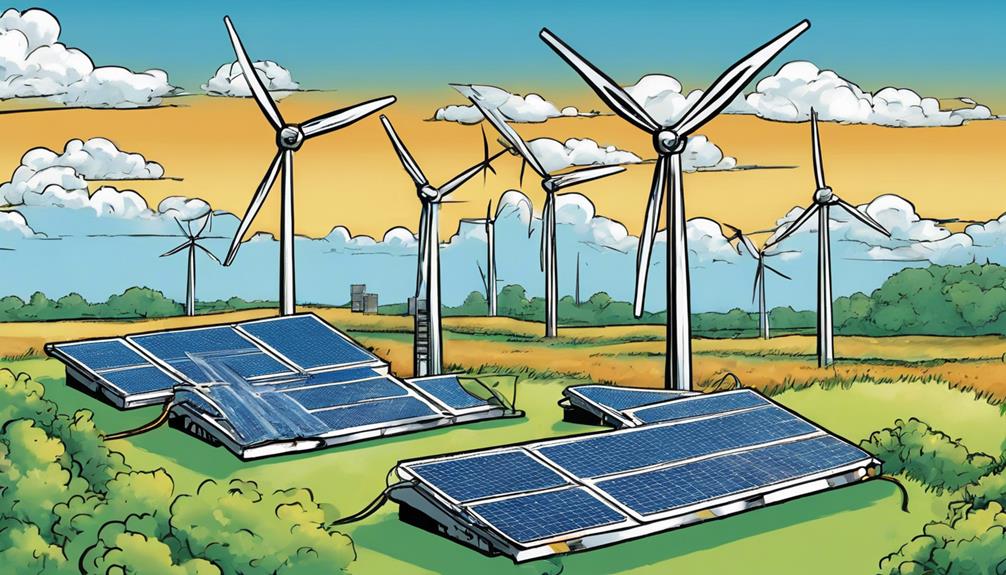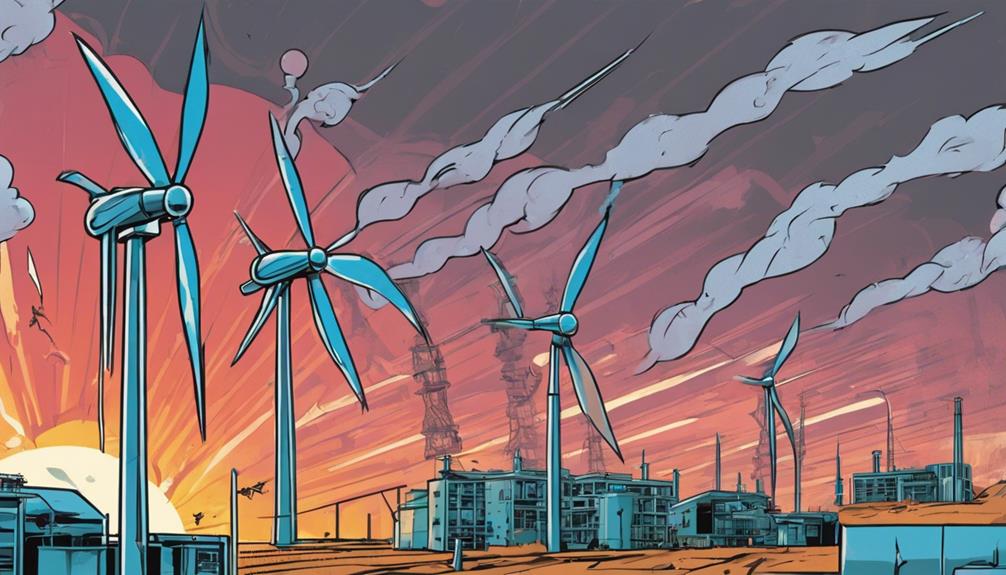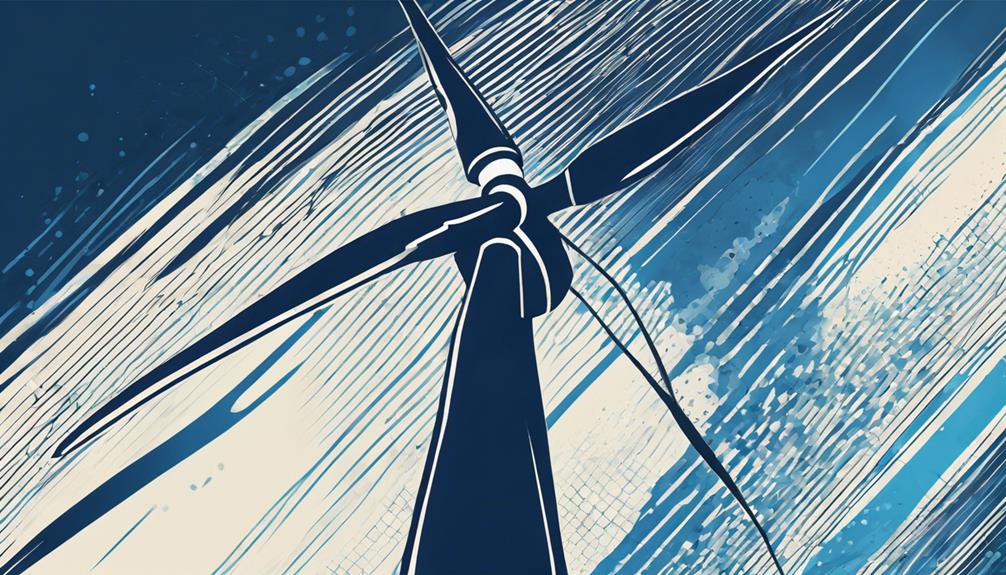To maximize solar and wind power efficiency, I need to select the right charge controller. It's vital in harnessing renewable energy and ensuring a safe, efficient, and reliable charging process. There are different types of charge controllers, including PWM, MPPT, hybrid, and smart controllers, each suited for specific applications. Understanding voltage levels and efficiency is also crucial, as high-voltage systems can reduce costs and maximize efficiency. By choosing the right controller and implementing overload protection measures, I can optimize system performance and prevent damage. Now, let's dive deeper into the details to reveal the full potential of my renewable energy system.
Key Takeaways
- Select a charge controller that matches the voltage level of your system to ensure optimal performance and efficiency.
- MPPT controllers are more efficient than PWM controllers, especially in high-voltage applications, and track the maximum power point for maximum power extraction.
- High-voltage systems allow for smaller wire sizes, reducing costs and maximizing efficiency, making them ideal for larger installations.
- Regularly monitor system performance to detect potential issues, and recognize and resolve them promptly to avoid damage and optimize efficiency.
- Choose a high-efficiency charge controller with a proven track record, considering factors like type, voltage and current ratings, overload protection, and battery compatibility.
Types of Charge Controllers

When it comes to harnessing the power of solar and wind energy, selecting the appropriate type of charge controller is crucial. I've found that there are four main categories to take into account: PWM, MPPT, hybrid, and smart controllers, each with its unique strengths and weaknesses.
PWM controllers are suitable for lower-voltage applications and are affordable and reliable.
MPPT controllers, on the other hand, handle higher voltage levels, enhancing solar power efficiency.
Hybrid controllers combine the benefits of both PWM and MPPT.
Smart controllers optimize charging based on battery condition and environment.
Voltage Levels and Efficiency

As I explore the domain of solar and wind power, I've come to realize that voltage levels play a pivotal role in maximizing efficiency, with high-voltage systems requiring higher-powered charge controllers to optimize energy harvesting.
Here are some key takeaways:
- High-voltage systems allow for smaller wire sizes, reducing costs and maximizing efficiency.
- MPPT controllers are more efficient than PWM controllers, especially in high-voltage applications.
- MPPT controllers track the maximum power point of the solar array for maximum power extraction.
- PWM controllers are better suited for lower-voltage applications, where efficiency isn't as essential.
- Matching the correct charge controller to the voltage level of your system is vital for best performance.
Series Vs Shunt Controllers

I've found that understanding the difference between series and shunt type controllers is essential for ensuring safe and efficient charging in my solar and wind power systems.
Series type controllers monitor voltage and reduce current at preset levels, whereas shunt type controllers divert charging current away from the battery.
Shunt type controllers are more effective in preventing overcharging, as they continuously adjust charging current based on battery state of charge. I prefer shunt type controllers for their advanced overload protection, which prevents damage to my batteries and wiring.
Overload Protection Measures

As I explore the world of solar and wind power, I've come to realize the importance of overload protection measures in my charge controllers. By making sure my charge controllers have robust overload protection measures in place, I can prevent battery and wiring damage, electrical fires, or overheating, and guarantee a longer lifespan for my solar and wind power systems.
Here are some key overload protection measures I've learned to implement:
- Step down voltage and regulate current to prevent overcharging
- Use double protection for larger systems to guarantee added safety
- Monitor system performance regularly to detect potential issues
- Check for error codes or warning indicators that may signal problems
- Follow manufacturer guidelines for troubleshooting and issue resolution.
System Performance Monitoring

I regularly observe my solar and wind power system's performance to confirm it's operating within specified voltage and current ranges, identifying potential issues before they escalate into major problems. This proactive approach guarantees my system runs efficiently and safely.
I closely monitor my charge controller's temperature, watching for error codes or warning indicators that could indicate a problem. By taking this approach, I can recognize and resolve issues promptly, avoiding potential damage to my batteries, wiring, and other components.
Regular monitoring also assists me in optimizing my system's performance, making adjustments as necessary to maximize its power output.
Charge Controller Selection

When selecting a charge controller for my solar and wind power system, I consider the type of renewable energy source, system voltage, and battery type to guarantee the controller can efficiently and safely manage the energy flow. This vital component secures that my batteries are charged correctly and prevents damage from overcharging or overloading.
To make the right choice, I consider the following key factors:
- Type of controller: PWM, MPPT, hybrid, or smart controllers, each suited for specific applications
- Voltage and current ratings: Ensuring the controller can handle the system's voltage and current output
- Overload protection: Essential for preventing battery and wiring damage
- Compatibility with battery type: Matching the controller to the battery's chemistry and requirements
- Efficiency and reliability: Opting for a high-efficiency controller with a proven track record
Efficient System Operation

Regularly monitoring system performance guarantees that my solar and wind power system operates at peak efficiency, preventing potential issues before they arise. I make it a point to check voltage and current levels within specified ranges to ensure best functioning.
Monitoring charge controller temperature is also essential to prevent overheating, which can lead to system failure. I keep an eye out for error codes or warning indicators that may signal a problem.
Frequently Asked Questions
Can I Use a Single Charge Controller for Both Solar and Wind Power?
'I can use a single charge controller for both solar and wind power, but it's essential to choose a hybrid controller designed for multiple energy sources, ensuring compatibility and efficient energy harvesting.'
How Do I Determine the Correct Charge Controller Size for My System?
"I'd need a crystal ball to predict my energy needs if I didn't calculate my charge controller size correctly I consider my system's voltage, current, and power output to determine the perfect fit – no guessing games here!"
Are Smart Charge Controllers Worth the Additional Cost?
I think smart charge controllers are worth the extra cost; they optimize charging based on battery condition and environment, maximizing power output and extending system lifespan, making them a worthwhile investment.
Can I Upgrade My Existing Charge Controller to a More Advanced Model?
'I'm considering upgrading my existing charge controller to a more advanced model, but I need to assess compatibility and confirm the new controller can handle my system's voltage and current requirements.'
Do I Need a Separate Charge Controller for Each Battery Bank?
"I'm wondering, do I really need a separate charge controller for each battery bank? The thought keeps me up at night. Thankfully, the answer is no, but it depends on the type of controller and system configuration."
How Can Solar and Wind Power Efficiency be Maximized through Revolutionizing Maintenance Techniques?
Revolutionizing solar farm maintenance is essential to maximizing the efficiency of solar and wind power. Implementing advanced monitoring systems and predictive maintenance techniques can help identify issues before they become major problems. This proactive approach can ensure that renewable energy sources operate at peak performance levels, ultimately increasing their overall efficiency.
How Can Improving Energy Flow Efficiency Maximize Solar and Wind Power Efficiency?
Maximizing solar and wind power efficiency relies on boosting energy flow efficiency. By improving the flow of energy, these renewable sources can generate more reliable and consistent power. This can be achieved through better designs and technologies that minimize energy loss and maximize output.
Conclusion
As I wrap up my journey into the world of charge controllers, I'm left with a sense of empowerment – I can harness the power of the sun and wind like a superhero.
I've learned that the right controller can mean the difference between a system that's merely mediocre and one that's a powerhouse. By choosing the perfect controller, I can access a wealth of energy and make a real difference in the fight against climate change.










